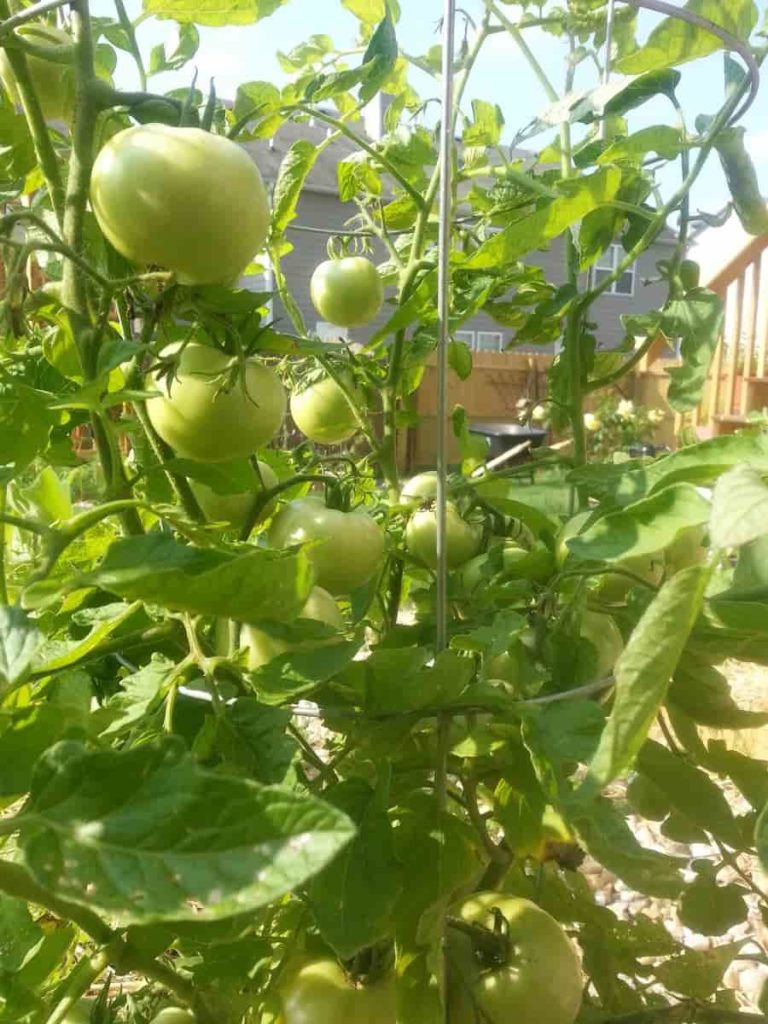A home garden brings vibrancy and color to your outside space and provides you with abundant fresh fruits, vegetables, and herbs. You won’t need a lot of things to get started, which is good news. If you already know what you want to cultivate, you are well on your way to achieving your goals. A garden plan can also serve as a starting point if you already know what you want your garden to look like.
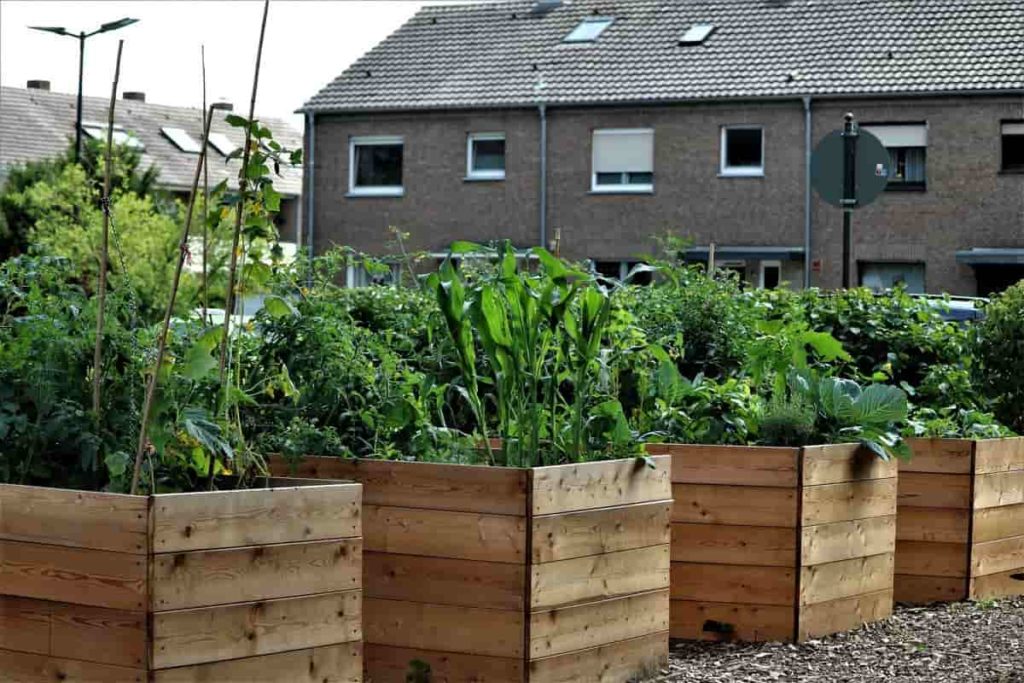
Below we will learn about Houston backyard gardening, the best vegetables, flowers, herbs, and fruits to grow in Houston backyards, how to set up a Houston backyard garden, the easiest plants to grow in Houston, the best fruits and vegetables to grow in Houston in and all, USDA hardiness zones of Houston, when to start planting a backyard garden in Houston, and a step by step guide to starting a backyard garden in Houston.
What are the USDA hardiness zones/ planting zones of Houston?
On the map of USDA Hardiness Zones, the city of Houston is located in Zone 9a. You are in the 8b precinct if you are located a short distance north of the city. What exactly does it entail? Stickers indicating the hardiness zones of blooming plants sold at neighborhood garden centers should serve as a guide for selecting a plant that can survive and grow in that region. The weather of Houston is characterized as a humid subtropical climate with tropical influences.
The average high temperature for August is 94.5 degrees Fahrenheit (34.7 degrees Celsius), while the average low temperature for January is 42.2 degrees Fahrenheit (5.7 degrees Celsius). The average annual precipitation falls 49.77 inches (1,264 mm). Even though there are occasional dry periods, there is abundant rainfall throughout the year. Flooding is the most prevalent kind of severe weather in Houston, and it happens most often during the city’s season, which runs from May through October.
Tornadoes may sometimes be seen in this region, most often during the springtime when supercell thunderstorms are present. When tropical cyclones form in the Atlantic during hurricane season, Houston risks receiving torrential rain and other damaging winds. Storm Nicholas, which struck in 2021, was the most recent hurricane to make landfall. During June through August, Houston is sweltering, with occasional thunderstorms and afternoon showers.
In the morning, the relative humidity may be as high as 90 percent, and by the afternoon, it’s down to 60 percent. Temperatures in Houston during the summer are comparable to the normal highs and lows were seen in tropical regions, such as those in the Philippines and Central America. Because of the relative humidity level, the heat index is greater than the temperature experienced.
Compared to most other regions in the United States, the winters in Houston are comparatively warm, dry, and moderate. On average, the winters in Houston are colder than those in South Florida and Southern California, on par with those in southern Louisiana and Central Florida, but slightly warmer than those in Dallas, San Antonio, Austin, Atlanta, and other inland southern cities.
In case you missed it: Los Angeles Backyard Gardening: How to Start with Vegetables, Fruits, Flowers, and Herbs at Home in California
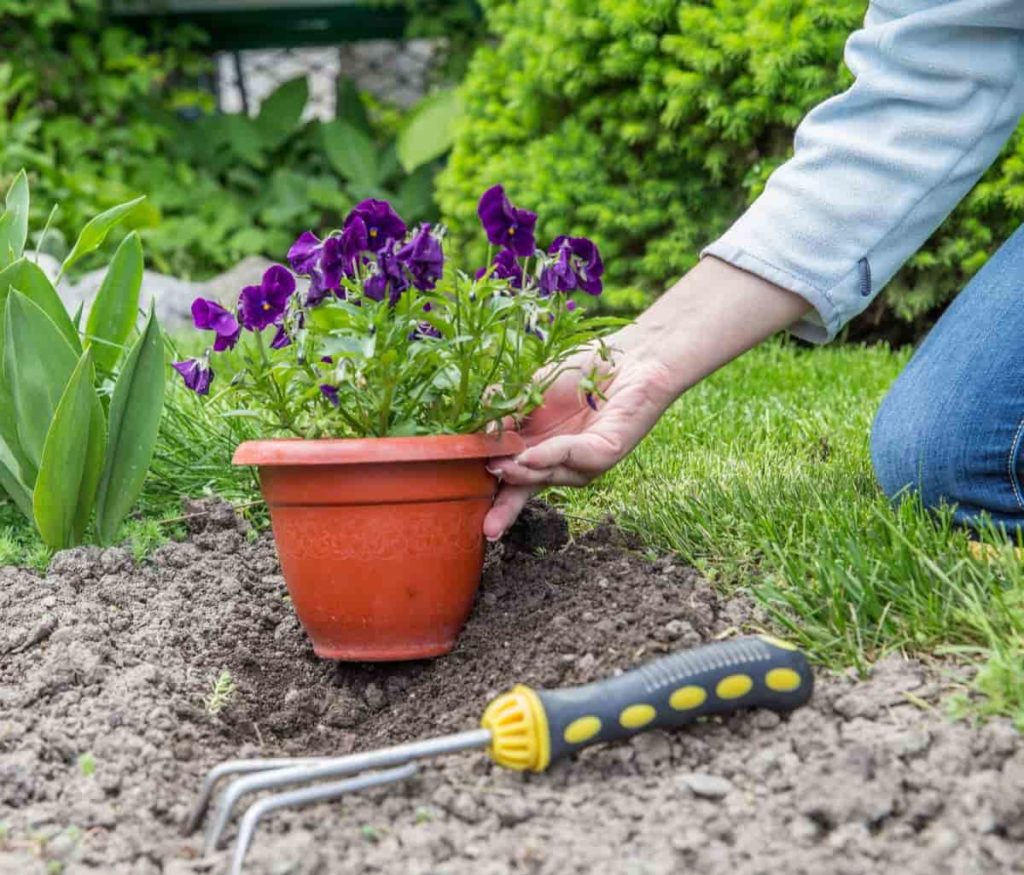
South Florida and Southern California both have significantly warmer winters. Temperatures below freezing are seen at George Bush Intercontinental Airport on an annual basis on an average of 9.6 days. During the winter, cold fronts may bring low evening temperatures that plummet into the 30s, although they often keep temperatures above freezing. Night-time temperatures range from 30 to 40 degrees Fahrenheit.
Houston backyard gardening: Step-by-step guide to starting a backyard garden in Houston
Select an ideal site in your backyard
A garden’s success relies heavily on its location, which is true even for those urban gardeners with little choice. The optimal location receives full or almost full sunshine and has rich, healthy soil that is deep and well-drained. The place must be close to a water supply and devoid of existing bushes or trees that might provide a threat of shadow. Almost every location, however, can reach a high level of agricultural production provided specific cultural techniques are altered, and adaptive plant species and varieties are chosen.
In many state regions, the soil isn’t ideal for producing plants. Raising beds presents a unique challenge if the soil contains heavy clays and has poor drainage. Raised beds should have a height between 12 and 18 inches, a width between 4 and 6 feet, and a length between 8 and 10 feet. Materials like cinder blocks repurposed railroad ties, and landscaping timbers are some of the best options for constructing a raised bed.
When the beds have been created, the next step is to fill them with a growth media. The development of most plants is optimal when they are planted in a combination of one-third topsoil, one-third sand or coarse perlite, and one-third compost or bark mulch.
Prepare the soil at the selected site
There are many places to plant a garden, but very few have rich, fertile soil suitable for producing vegetables. Therefore, the soils must be modified to improve drainage and air circulation. When dealing with thick clay soil, it is possible that adding organic matter or sand will be quite beneficial. To enhance the soil’s physical quality, cover the surface of the garden site with one to two inches of high-quality sand and two to three inches of organic matter, then turn the mixture under in the late winter or early spring.
Instead of aiming to build suitable soil in only one or two growing seasons, focus your efforts on improving the soil’s physical state over an extended period. Add organic material from composted materials, peanut husks, rice husks, grass clippings, or any other organic matter periodically. Deeper is preferable when turning the soil, so aim for 8 to 10 inches. Gypsum increases soil structure and drainage.
Add gypsum at six to eight pounds per one hundred square feet when working with clay soil. Clay soil is notoriously challenging to work with. When amending the garden site with organic matter or sand, it is essential to take precautions to prevent the introduction of soil pests such as nematodes. A laboratory service offered by the Texas Cooperative Extension can identify whether or not nematodes are present in the state’s soils. Get in touch with the Extension agent in your county for more information.
Never work with moist garden soil. Compared to thick clay soils, soils with a high percentage of organic matter are easier to deal with when they have a greater moisture content. To test whether or not the soil can be worked, take a tiny quantity of dirt and squish it together in your palm. It is too moist to deal with if the substance can be rolled into a ball without easily breaking apart when subjected to gentle pressure from the thumb and finger.
When the soil has been properly prepared, it is easier for seeds to germinate than when the soil is lumpy and uneven. When enough preparation has been done, the labor required for planting and maintaining the crop is significantly reduced. On the other hand, it is feasible to prepare some soils excessively. Granular soil, as opposed to fine powdery soil, is preferable for planting.
Start planting your backyard garden
Thinking of how to plant your backyard garden? In the spring and the autumn, you should get an early start on planting your garden so that the plants you grow will have the best possible circumstances to thrive while growing and maturing. The harvesting of many plants can be brought forward, and the productive time of many plants can be extended if they are transplanted when feasible.
Sew the area directly in areas where it would be impractical or inconvenient to transplant. When planting, it is best to practice covering the seed by a distance two to three times as great as its largest dimension. This is particularly relevant to growing plants with large seeds, such as green beans, cantaloupes, sweet corn, cucumbers, and watermelons. On the other hand, an average planting depth of one-fourth and one-half inches is often sufficient for planting crops with tiny seeds, such as carrots, lettuce, or onions.
Plant the seeds rather densely with the idea of eventually thinning them out to get the best possible stand. During germination, you should not let the soil get too dry or crusty, but you shouldn’t overwater it. When transplanting plants, it is important to avoid planting them too deeply or too shallowly, particularly if the plants are in pots like peat pots. Planting too deeply and planting too shallow may result in the loss of formed roots.
Planting too deeply can expose containers to the surface, leading to root death from excessive drying. Some plants can be transferred bare-root, while others should be transplanted into pots for the best results. Always apply a starter solution before transplanting plants, especially heat-loving ones like tomatoes and peppers. Starter solutions can be acquired from nearby nurseries or produced at home by combining three to two cups of fertilizer such as 10-20-10 with five gallons of water in a mixing container.
In case you missed it: Dallas Backyard Gardening: How to Start with Vegetables, Flowers, Herbs, and Fruits at Home
When working with light, sandy soils, use the lower rate. Before planting, pour 2 and 1 pint of starter solution into each transplant hole. The size of the plant decides the starter solution quantity. There are enough nutrients available to support the growth of new plants without drying out the older ones.
Be careful while watering your container garden.
Wondering how to water your backyard garden? It is important to moisten the soil enough so water can reach a depth of at least 15 centimeters (6 inches). Most gardens need a moisture supply similar to one inch of rain per week throughout the growing season for the most excellent yield possible. Sandier, lighter soils often need to be watered more frequently than soils that are heavier and darker.
If you want to use sprinklers, it is best to water the plants in the morning so that the foliage has time to dry before nightfall. This approach helps avoid foliar diseases, common on most plants, because they thrive in environments with high humidity and low temperatures. In this respect, using irrigation water as a water delivery source is also advantageous. In addition, the irrigation method being discussed here is the one that saves the most water and is most suited for usage in conjunction with mulches.
Start fertilizing your backyard garden
How to fertilize your backyard garden? Another essential component of good garden planting is using the right fertilizer. Both the kind of soil and the crops being grown influence the quantity of fertilizer that is required. There are several types of soil in Houston, Texas, ranging from deep blow sands to rich, well-drained soils to heavy, black clays overlaid by layers of caliche rock. In general, crops cultivated on sandy soils react well to generous potassium levels, but crops planted on clay soils do not respond favorably.
At the time of planting, fertilization may be applied far more heavily to heavy clay soils than it can to sandy soils. Sandier soils can hold and absorb fertilizer at three to four times lower rates than soils heavy in clay and organic matter. Unfortunately, poor soils that are thin and sandy and have the greatest demand for fertilizer cannot be fed as extensively as other types of soil and keep plants safe.
The problem can be solved by applying fertilizer in more frequent but lower dosages to poor and thin soils. Get in touch with the county Extension agent in your area and ask for a soil test kit if you want correct instructions about how much fertilizer to use. In general, if the soil in your garden is deep and sandy, you should use a full preplant fertilizer such as 5-10-10 or 6-12-12 at a rate of one to two pounds per 100 square feet when fertilizing your garden before planting.
A fertilizer such as 10-20-10 or 12-24-12 applied at a rate of one to two pounds per one hundred square feet should be acceptable for use in a garden with a soil type with a high proportion of clay. Applying fertilizer a few days before planting should be done after identifying the appropriate quantity of fertilizer to use for a pre-plant treatment. Dig the garden plot with a spade, apply the fertilizer by hand, and turn the soil once or twice to ensure that the fertilizer is well combined with the soil.
After the fertilizer has been well incorporated into the soil, you should bed the garden to prepare it for planting. Before planting, add 1-20-0, often known as superphosphate, just underneath the row of seeds or plants you wish to put on alkaline soil. Apply the superphosphate at a rate of 1 to 2 pounds per 100 linear feet of row at a depth of 2 to 4 inches below the seed or the plant’s roots. Be careful not to band any substance containing nitrogen exactly below the row.
Provide supplemental nitrogen by a furrow or side-dress treatment. When working with most soil types, it is sufficient to apply two to four pounds of 21-0-0 (ammonium sulfate) per one hundred linear feet of row and then water it in. Plants like peppers, tomatoes, and squash should have an application done as soon as the fruit begins to set. When the plants have developed many sets of distinctive leaves, such as cabbage and lettuce, provide a side dressing.
Start mulching your backyard garden
Mulching may improve yield by preserving soil moisture, preventing the development of weeds, helping to control soil temperature, and reducing losses caused by rot in the soil. Organic mulches can be made from various materials, including straw, leaves, grass clippings, compost, bark, and sawdust.
When organic mulch is worked into the soil after a crop has been harvested, the soil’s tilth, aeration, and drainage are all improved. Although the quantity of organic matter to utilize is contingent on the kind, a layer of one to two inches spread over the surface surrounding plants that are actively developing should be sufficient.
When preparing the soil for successive crops by turning organic mulches beneath, you should apply extra fertilizer at a rate of 1 pound per 100 square feet. This will stimulate the organisms that live in the soil and lessen the loss of nitrogen resulting from the breakdown of organic materials brought on by the microorganisms in the soil.
Pest and disease management of your backyard garden
Gardeners in Houston, Texas, are concerned about various pests, including diseases and insects. Extended growing seasons and winters just moderately cold allow for the development of enormous insect populations. As a consequence of this, gardeners face significant hurdles as a result of these pests. Spraying should be avoided whenever it is practicable. If pesticides are required, be sure only to use those authorized, and spray with caution.
Only those plants that the pesticides are specifically designated for should have them applied. Read and follow pesticide labels carefully. Instead of treating disease, disease control focuses on preventing it from occurring in the first place. When signs of disease become noticeable, it is sometimes too late; the harm has already been done.
As a result, gardeners have to familiarise themselves with the environmental circumstances that can favor various diseases common to the crops being produced and the diseases themselves. Cool and wet conditions are ideal for the growth of a wide variety of illnesses that may be found in gardens. Watch for symptoms and offer suitable treatment when environmental factors are favorable to the disease.
When to start a backyard garden in Houston, Texas?
Because it does not become cold in Houston until late November or December, we have to plant our autumn crops somewhat later than is advised in most planting manuals or on the seed packs themselves. We don’t plant for the winter season since the temperature in Houston is rather high and is not conducive to plants that thrive in cold conditions.
In case you missed it: How to Grow Berries in USA: At Home in Pots, Containers, Indoors, and Tips
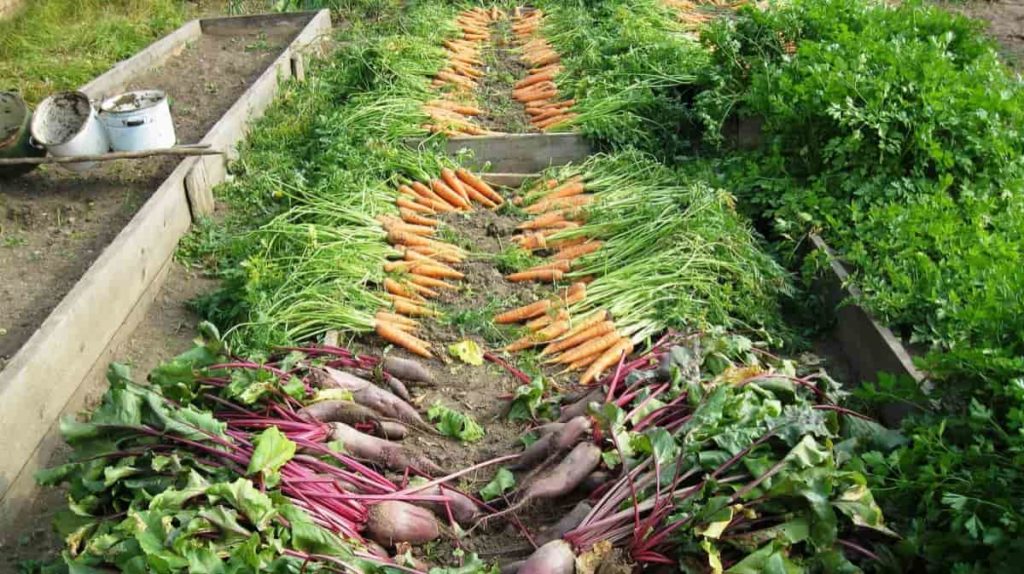
It is OK to plant spring and summer crops one to two months earlier than the recommendation, but planting autumn crops one to two months later is necessary. Most of these plants are hardy and will continue to produce well long after their season ends. As long as your plants are still producing, you should feel free to leave them alone. Many winter plants will keep producing flowers and fruit far into the spring.
Fall is the time of year that most people think of when they think of gardening. However, growing plants and vegetables in the fall demands a different strategy than cultivating them in the spring and summer. Sowing seeds at the correct time is vital to start growing a fall vegetable garden in Texas.
The ideal time to plant seeds is 12 to 14 weeks before the first frost, which is late September or early October. But what kinds of plants can be grown in Houston at this time of year? Fifty-eight degrees Fahrenheit is the typical low temperature in the autumn. This implies that if you sow seeds 12 to 14 weeks before the first frost of fall, your plants should be able to endure and even thrive at temperatures as low as 50 degrees Fahrenheit.
Radish, Beets, lettuce, mustard greens, and carrots are all frost-tolerant vegetables that can withstand temperatures as low as 32 degrees Fahrenheit. These vegetables will thrive in an autumn vegetable garden in Houston, Texas if the temperature stays above 50 degrees Fahrenheit. After planting seedlings, two weeks of regular watering are required before they can sustain plant development. Your fall vegetables ought to flourish in the heart of Texas and provide you with a large crop come autumn.
Winter vegetables in Houston, Texas must be able to survive temperatures in the 50s and even 40s, much as autumn crops. Vegetables that can thrive in colder climates, such as radishes, spinach, Swiss chard, and carrots, are excellent choices for a winter garden that will provide your family with fresh vegetables. However, even if the variety of winter veggies grown in Texas may not be all that large, the winter months are an excellent time to prepare the soil and seedlings for spring.
Assessing the texture, water capacity, and thickness of your garden plot in Texas is an important step in getting your garden ready for the warmer season. Use your winter garden to prepare the soil for spring and summer. You can also analyze the growth patterns of seedlings by putting them in mason jars indoors and calculating the adequate quantity of water and sunshine for the veggies you want to produce in your garden throughout the spring and summer.
Investing some time during the Houston winter to get your garden ready for the following spring and summer can help increase the amount of product it produces. Assessing the quality of your soil and the condition of any winter crops that are still growing is the first step in getting your late-season gardening project off the ground. Winter vegetables grown in Houston, Texas, such as turnips, lettuce, and peas, often do not flourish in temperatures that are too warm.
You may remove such plants from your garden without risking their health and then refill the soil by adding two inches of compost or manure. It is recommended that Texas gardeners wait until the first frost in early March to plant their spring and summer crops after clearing and reviving their grounds. In contrast to crops grown throughout the winter, the variety of excellent summer vegetables that may be grown in Texas is significantly greater.
If you have the room, a summer vegetable garden is perfect for cultivating vegetables such as cucumbers, okra, squash, eggplant, peppers, and even maize. After the final frost of the season, plant the seeds and continue to water them every day for the next two weeks. Once your summer veggies in Texas show signs of growth, you should regularly prune away any plants that are wilting or have become overgrown to maintain the health of your garden.
Best vegetables to grow in Houston backyards
Many vegetables can be grown in the backyards of Houston, such as beans, broccoli, cabbage, beets, collards, lettuce, carrots, onion, radish, spinach, turnips, and other vegetables.
Onions: Onions have a seemingly endless list of potential applications. They are one of those ideal veggies with a sweet and fragrant taste, and they go well with various recipes. In addition to being quite tasty, they possess potent anti-inflammatory and antibacterial qualities and are an excellent source of vitamin C and B6. If you grow onions regularly, you should consider rotating your crops to reduce the risk of pests and illnesses in your onion patch. Crop rotation can assist.
Peas: Because peas are so simple to grow and sprout pretty quickly, this is an excellent project for people who have never tried gardening. If you have children you’d like to encourage to take an interest in gardening, this is a great way to get them started.
Or, if you’re like many other people, you weren’t born with a natural talent for gardening, and you’re just starting, that’s OK! You won’t likely encounter significant challenges when cultivating peas in the garden. Sugar snap peas, for example, come in so many distinct types that you can try various ways to prepare them, whether raw or cooked.
Potatoes: You should wait until late autumn to harvest before the ground freezes. Lift to prevent becoming cut, bruised, or breaking any roots. Do not wash, but remove any soil that has sticked. Allow sitting in a warm place for the next two weeks while ensuring enough ventilation. Because of this, bruising and root rot caused by storage will be avoided. Keep in a cold, dry location until ready to use.
Tomatoes: Harvest them when they have reached their full color while still firm. When the blossom end of the tomato plant develops a slight red tint, it is time to pick the fruit. After that, put it in a warm spot so that it may develop. If you want the greatest taste, harvest while the fruit is at its full crimson state. Put tomatoes that have reached their ripeness in the refrigerator.
In case you missed it: Detroit Backyard Gardening: How to Start with Vegetables, Flowers, Herbs, and Fruits at Home
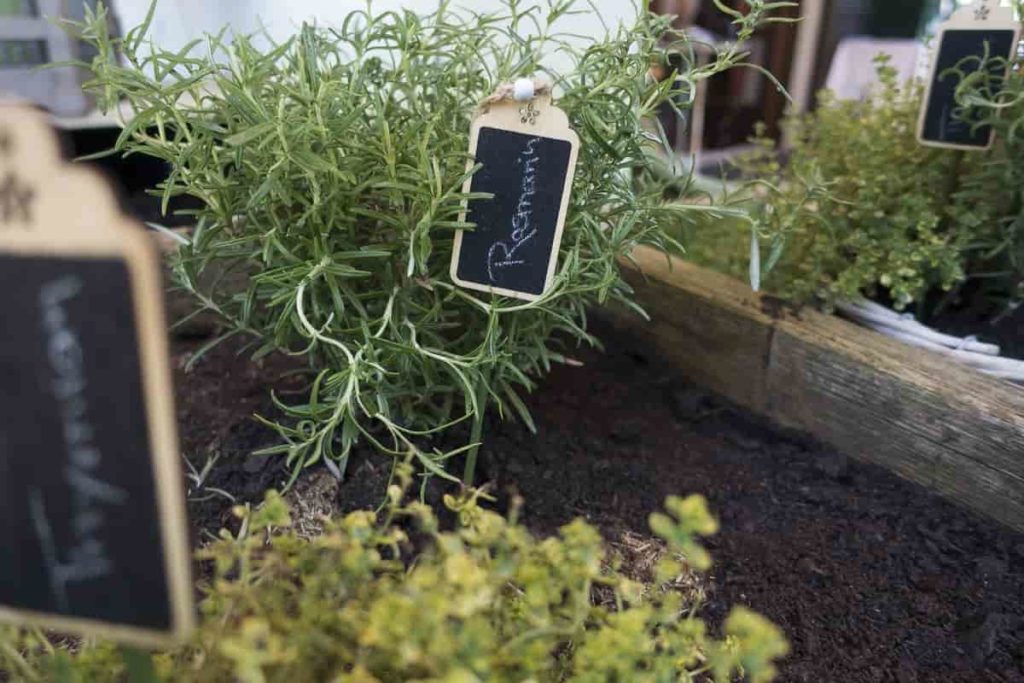
Spinach: Spinach, much like arugula, grows considerably better when temperatures are lower and like to be watered frequently in soil that has adequate drainage. Spinach also does much better when temperatures are lower. The leaves of spinach can be picked and grown again at least twice, and sometimes much more times than that. Spinach grows with a vast taproot that develops under the soil.
Best fruits to grow in Houston backyards
Many fruit trees can be grown in the backyards of Houston, such as figs, persimmons, pomegranates, lemons, plums, peaches, oranges, cherries, apples, and other fruits.
Figs: The Mediterranean environment of USDA zone 9 is great for growing your fig tree! Zone 9A gardeners advise waiting until after the final spring frost before planting fig trees in the spring or fall. You may choose from a broad selection of fig trees depending on your climate zone and where you want to grow them.
Persimmons: The American persimmon and the Asian persimmon are two distinct types of persimmon trees. As low as -25 degrees Fahrenheit, the American persimmon may grow and thrive. In contrast, the Asian persimmon can withstand temperatures as low as 0°F. Persimmon trees should be planted in the autumn, and bare root persimmons should be planted in winter to allow the plant time to develop roots before it begins to grow.
Astringent and non-astringent persimmon tree kinds are also available. The optimum time to consume astringent persimmons is when they are soft and ripe. Tannins are reduced in non-astringent varieties of persimmon, making them more pleasant even when the fruit is not yet completely ripe.
Pomegranates: Pomegranate trees enjoy tropical or temperate regions where they may be cultivated as shrubs or well-pruned and maintained as tiny trees. After the final spring frost in late April, sow pomegranate bare-root plants and ball and burlapped pomegranate plants. Pomegranate plants can be grown year-round in pots, but avoid planting during drought or high heat. There are various pomegranate trees, each with a distinct taste or attribute.
Lemons: Humid, tropical, and subtropical conditions are ideal for the growth of lemon trees. Lemon trees may be found in two sizes: dwarf and standard. February is the optimum month to grow lemon trees. Since the warmer months of the year tend to stress plants, planting lemons in February allows them to create a strong root system. Lemon trees come in a wide variety, but not all of them will survive Houston’s harsh winter weather.
Plums: A few types of plum trees flourish in hardiness zones nine and above, despite their reputation for being finicky. Choosing a plum tree appropriate for your area’s hardiness zone is important. When planting trees from bare roots, it is best to plant plum trees in the late winter or early spring, when they are dormant, since this will cause the least stress during the transplant. The plum tree comes in various cultivars, but it is important to remember that not all of them are suited to grow in zone 9 due to its more severe winters.
Best flowers to grow in Houston backyards
Various flowers can be grown in Houston, such as eastern purple coneflower, black-eyed Susan, Texas lantana, red turk’s cap, autumn sage, Texas olive blossoms, Indian blankets, blue daze, African bush daisy, and other flowers.
Eastern purple coneflower: Coneflowers are a prominent flower in Texas. Lavender-colored petals descend from a glossy cone in the middle of this specific flowering plant. This butterfly-attracting plant blooms in spring and summer. It’s also a great cut flower since the tall flowers linger for approximately a week until they begin to droop.
In case you missed it: Summer Watering Guide: For Vegetables, Flowers, and Herbs
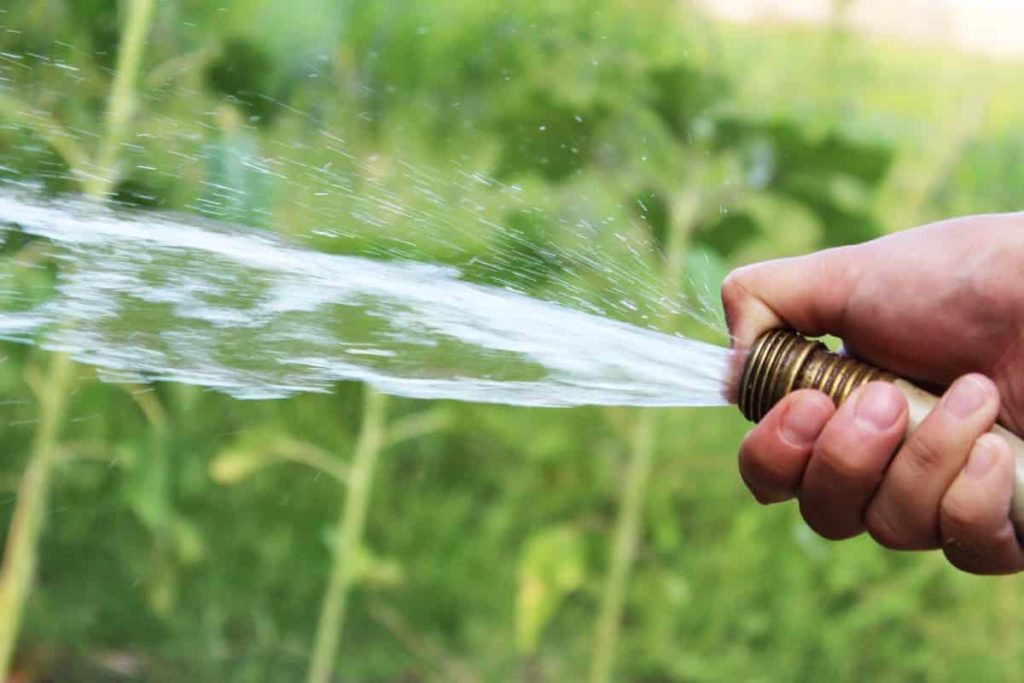
Black eyes Susan: Its black center gives the black-eyed Susan its common name. The petals of this flower are a bright yellow, and they bend downward as well. It’s a yearly occurrence, meaning it will return each year. As a bonus, it’s drought-resistant and can grow up to five inches wide.
Texas lantana: The Texas Lantana plant’s yellow and orange flowers are ideal for luring butterflies. Due to their drought and salt tolerance, they’re also ideal for coastal locations.
Indian blanket: Red and yellow blooms are the reason for this plant’s name. On the stamen, the color changes from yellow to red and then back to yellow, with the core of the stamen being yellow and the outer petals closest to the center being red. It is a kind of wildflower that can reproduce by seed on its own, and it blooms beautifully year after year because of its vibrant colors.
Blue haze: Blue haze is a perennial shrub belonging to the morning glory family. It can reach a maximum width and height of 2 to 3 feet. The half-inch-wide, egg-shaped leaves of this grey fuzzy plant are covered with fuzzy hairs. Its flowers have a diameter of one inch and are blue or purple. Full sun and sandy, well-drained soil are ideal conditions for planting. These plants may be grown from seed or cuttings in USDA hardiness zones 8 through 11.
Best herbs to grow in Houston backyards
Many herbs can be grown in the backyards of Houston, such as sage, thyme, chives, rosemary, lavender, oregano, curry, basil, mint, and other herbs.
Sage: Growing sage is one of your most fruitful herb practices. Sage can generate various colors, including pinks, greens, and gold. It certainly is a magnificent and delicious piece of plant life.
Mint: Because it is useful in a wide variety of contexts, growing mint in your garden is prudent for several reasons. Mint can be grown in gardens that get either full sun or partial shade, spread rapidly, and thrives when pruned several times. Your garden of culinary herbs should include mint, whether it’s to be used in teas or just to lure in helpful insects.
Thyme: Thyme is an often-overlooked plant. It’s too bad since thyme lends a unique taste to meat recipes that can’t be found elsewhere. Additionally, it dries well and retains its taste, making it an excellent addition to heartier winter fare. Thyme is easy to grow and thrives in various environments, including garden beds and containers. If you want to choose thyme whose aroma you like the most, you should get a few different kinds and compare them.
Basil: For the vast majority of us, basil is among the most well-known and most cherished of all herbal seasonings. Basil gets off to a quick start and has a phenomenal growth rate, making it an excellent choice for novice herb gardeners. Grow an abundant supply of basil to use in pesto during the cold season. It is important to remember to clip it back often to maintain bushy plants with lots of leaves.
Chives: Chives are a popular herb to grow, yet they are often discarded without being consumed. They indeed have a lovely appearance. More importantly, the subtle onion flavor makes them ideal for meals that need an additional layer of flavor but don’t want to be overpowered by onion.
Growing Indian vegetables in Houston backyards
If You Are an Indian and Living in the Houston Area of Texas, You May Grow Vegetables Such as Bottle Gourd (Sorakaya), Ridge Gourd (Beerakaya), Snake Gourd (Potlakaya), Cluster Beans (Goru Chikkudu), Broad beans (Chikkudukaya), Gongura, Bitter Gourd (Kakarakaya), Ivy Gourd (Dondakaya), Yellow Cucumber (Dosakaya), Malabar Spinach (Bachalikura), Taro/Arbi Root (Chamadumpa), Parwal, Methi Leaves (Menthikura), Curry Leaves (Karivepaku), Kothimeera, Ponnaganti Kura, Thotakura, and Palakura/Spinach.
Conclusion
You know how to start a backyard garden now. Start with the most basic steps. Create a basic garden by sowing seeds for lettuce, radishes, and beans. You should sprinkle some wildflower seeds throughout your yard. Anyone can garden. It simply requires a little bit of your time and patience. The benefits of gardening more than compensate for the labor required to maintain it.
- Gardening Techniques in Planting Vegetables
- Where to Place Indoor Plants in Your Home
- How to Grow Tomatoes Organically at Home: A Comprehensive Guide
- Organic Gardening on a Budget: Low-Cost Methods and Materials
- Gongura Seed Germination and Planting Methods
- Cabbage Seed Germination and Selection
- Broccoli Seed Germination and Selection
- Asparagus Seed Germination and Variety Selection
- Seasonal Flower Gardening: Best Practices for Spring, Summer, Fall, and Winter
- How to Grow Hibiscus from Flower
- Plantation Ideas for Home Decoration: A Beginners Guide
- Flower Garden Designs and Layouts for Beginners
- Planting and Spacing Techniques in Papaya: A Beginner’s Guide
- Growing Gold: Essential Techniques for Planting Pineapples
- How to Make Kalanchoe Plant Bushy: Home Remedies and Solutions
- 11 Reasons Why Your Gardenia is Not Blooming: Home Remedies and Solutions
- Eco Elegance: The Guide to Designing a Drought-Tolerant Landscape
- Gardening on a Slope: Strategies for Hillside Landscaping
- Nourish and Flourish: Top Organic Mulches for Thriving House Plants
- Everything You Want to Know about Indian Mogra Flower: Discover Uses and Growing
- Green Thumb Success: Expert Tips for Cultivating Greenhouse Pumpkins All Year Round
- Maximize Growth & Flavor: The Ultimate Guide to Companion Planting in Herb Gardens
- How to Control Rhododendron Problems Naturally: Home Remedies and Organic Ways to Fix Them
- Natural Magic: The Remarkable Benefits of Cinnamon for Plants
- Best Steps to Revive Dying Tulip with Natural and Organic Treatment
- 10 Reasons Why Your Angel Trumpet is Not Blooming: Remedies and Treatment
- How to Fix Periwinkle Leaf and Flower-Related Problems: Natural Remedies and Solutions
- How to Fix Zinnias Leaf and Flower Problems: Discover Natural and Home Remedies
- Organic Steps to Induce Lemon Tree Flowers: A Comprehensive Guide
- Bloom Booster: Crafting the Perfect Homemade Bougainvillea Fertilizer
- Optimizing Growth: A Guide to Applying NPK Fertilizer for Potted Plants
- 10 Best Homemade Fertilizers for Rubber Plant: DIY Recipes and Application Method
- How to Boost Female Pumpkin Flowers: Effective Steps for More Flowers and High Yields
- Transform Your Indoor Garden: Top Benefits of Pink Salt for Houseplants
- 10 Best Homemade Fertilizers for Peacock Plants (Calathea): Easy DIY Guide
- Unlock Blooms: 9 Reasons Why Your Potted Chrysanthemum is Not Blooming
